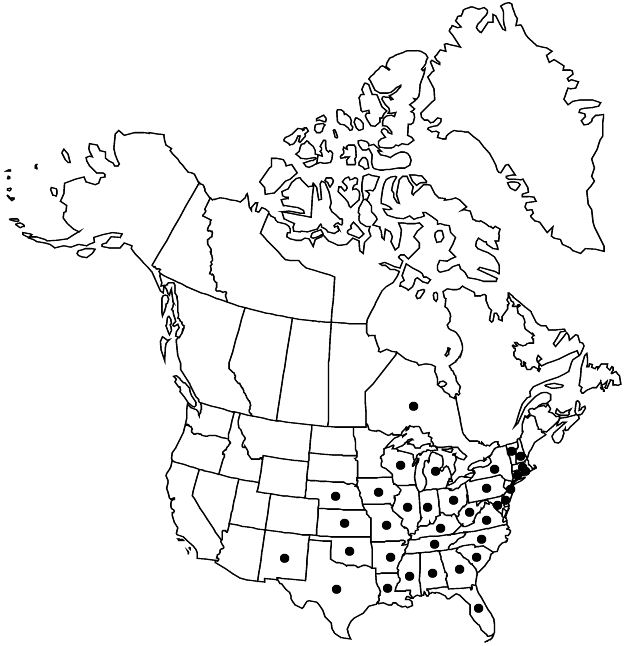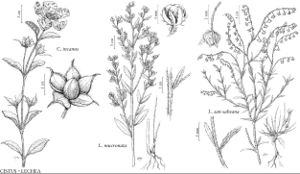Lechea mucronata
Précis Découv. Somiol., 37. 1814.
Herbs, biennial or perennial. Stems: basal produced; flowering erect, (15–) 30–90 cm, densely spreading-villous. Leaves of flowering-stems opposite or whorled; blade elliptic to ovate, 10–30 × 3–4 mm, apex acute to obtuse, mucronate, abaxial surface villous, adaxial glabrous. Pedicels 1 per axil, 0.8–1.5 mm. Flowers: calyx 1.4–2 mm, outer sepals shorter than inner. Capsules subglobose, 1.4–1.7 × 1.3–1.6 mm, ± equaling calyx. Seeds 2–5.
Phenology: Flowering late spring–summer; fruiting summer–fall.
Habitat: Dry, sandy or rocky open sites, sandy prairies, and margins of oak-hickory and pine-oak woodlands
Elevation: 10–1300 m
Distribution

Ont., Ala., Ark., Conn., Del., Fla., Ga., Ill., Ind., Iowa, Kans., Ky., La., Md., Mass., Mich., Miss., Mo., Nebr., N.H., N.J., N.Mex., N.Y., N.C., Ohio, Okla., Pa., R.I., S.C., Tenn., Tex., Vt., Va., W.Va., Wis.
Discussion
A recent collection of Lechea mucronata from sandhills on the southern high plains of eastern New Mexico represents a significant range extension.
Selected References
None.
Lower Taxa
"dm" is not declared as a valid unit of measurement for this property.
